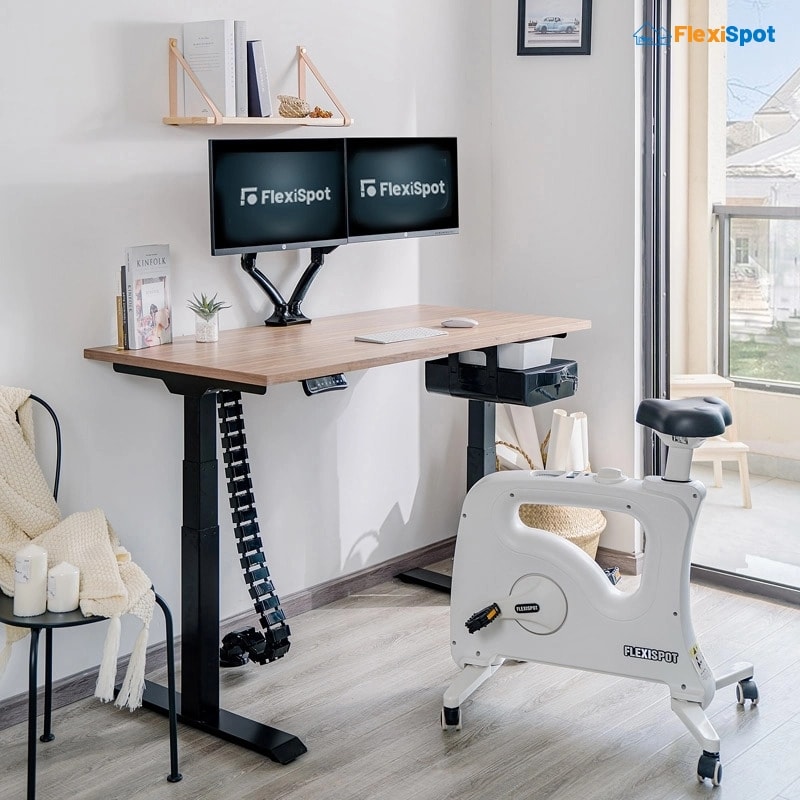It is no secret that the current work hours and environments are causing excessive mental and physical strain on employees around the world. Incidents of workplace injuries and ergonomic issues are at an all-time high, and they affect nearly all industries.
In the US alone, ergonomics injuries account for over 33% of all workplace injuries, and there are 47 thousand cases of such injuries recorded by the ER each year. With ergonomic injuries causing such damage to employees, it is important to know what they are and how to prevent them. Here is everything you need to know about the most common ergonomic issue in the workplace, what causes them, and the measures you can take to prevent them. Let's dive right in.
The Most Common Ergonomic Issues in the Workplace
Carpal Tunnel Syndrome
Carpal Tunnel Syndrome, or CTS, is one of the most widely recorded ergonomic injuries in employees. It is a disorder that causes stiffness and pain in your wrist due to severe nerve damage. About 3% of all women and 2% of all men globally experience CTs in their life, and it can take them away from their jobs for at least a month for treatment.
Lower Back Injuries
Another rather common issue is lower back injuries that occur due to improper back support and poor posture. More than 80% of Americans experience lower back injuries in the workplace, which costs over $100 billion in reduced productivity and inability to work.
Lower back injuries can develop in people working in any industry and usually happen due to excessive exertion and strain, fatigue, and lack of movement.
Tendinitis
Tendinitis is a broad term used to define inflammation of any tendons in the body. Although it isn't quite as instantly felt as CTS or back injuries, tendinitis can leave you unable to work and in severe pain if it isn't treated in the early stages. It mostly occurs in the legs, arms, and hips.
Sight Problems and Strains
Whether you're running machinery all day long or working in front of a computer, both of these activities can put excessive strain on your eyes. This, in turn, causes visibility issues, migraines, and an inability to focus due to itchy and dry eyes.
Tennis Elbow
Tennis Elbow occurs when there is inflammation and pain in the part of the arm where your triceps connect with the elbow joint. Although it used to be a mostly sports-related injury, it is becoming more common in the workplace, especially where employees need to exert themselves often physically.
Herniated Discs
If you have bad posture while working or stay sitting in a non-ergonomic chair for most of the day, you're putting your body at risk of developing herniated discs. This results in a spinal injury that can cause excruciating pain and muscle weakness. The best way to prevent herniated discs is to use a standing desk in your office and switch between working while sitting and standing.
Major Causes of Ergonomic Issues
Long work hours leave our bodies susceptible to numerous ergonomic injuries that need to be taken seriously and avoided. However, before we get into the best ways to prevent these injuries, it is important to first understand what causes them.
Operating in the Wrong Position
The human body is designed to work at its best in a neutral position. This neutral position is achieved when we sit comfortably with all of our joints aligned well. Since this position puts the least amount of stress on your bones and muscles, it allows your body to relax and focus better. It also reduces the chances of developing ergonomic injuries.
Unfortunately, most people don't work in neutral positions. You have probably noticed yourself slouching or slacking backward as you go about your work throughout the day. This puts extra stress on your back and wrists, increasing the chances of developing backaches and carpal tunnel syndrome.
Sedentary Work Style
Research has shown how sedentary work styles don't just lead to obesity but can also cause severe back strain and other ergonomic injuries. When your body is static for extended periods of time at work, it puts you at risk of musculoskeletal injuries due to increased pressure on your spine.
This is made worse when you're sitting still for long periods of time with no back support or a non-ergonomic setup. All of these factors combine to cause chronic injuries that require surgery to be fixed.
Prolonged Repetitive Motion
A significant number of ergonomic injuries occur over time due to constant, repetitive motion throughout the day. This is one of the leading causes of carpal tunnel syndrome in people under 50, as they spend their workdays typing, answering phones, or even doing repetitive construction work like hammering nails.
While these activities are essentially harmless on their own, consistent use of the same muscles to carry out the same action can easily cause strain. This strain, when continued over long periods of time, develops into ergonomic injuries that require medical attention before they get worse.
Constant Vibrations
Vibrations may seem harmless enough, but they can cause numerous ergonomic injuries if sustained over an extended period of time. They can even cause rather serious injuries like MSD in construction workers and bus drivers.
When you experience regular vibrations at your workplace, they can start targeting your blood capillaries and cause them to rupture. This is true for both whole-body vibrations and even localized ones. When your capillaries are damaged, it affects the nutrients and oxygen supply in certain parts of your body, like your wrists. Soon enough, you will notice your wrists starting to lose feeling in some spots and become extremely stiff.
How to Avoid Ergonomic Injuries in the Workplace
Now that you know what causes some of the most commonly occurring ergonomic injuries let's look at the best ways to prevent them.
Create an Ergonomic Work Setup
The very first step you need to take to prevent ergonomic injuries, be it in your office or even a work-from-home situation, is creating a proper work setup. Your office desk and chair should be highly ergonomic and situated in the right way to prevent extra strain on your body.
Start by investing in the Pro Standing Desk (E3/E5) from FlexiSpot. This is a highly stable standing desk that allows you to break free from your sedentary lifestyle as you switch between working while sitting down and standing. The desk has an exceptional loading capacity of up to 220 lbs. for your computer system and all other work essentials.
The second thing you need to ensure is that the computer screen is at least 20 inches away from your face. Keep it at eye level to prevent additional strain on your eyes, and adjust your desk height to be at elbow length. You should also invest in an ergonomic office chair from FlexiSpot for exceptional back support.
Take Stretch Breaks
Another great way to prevent ergonomic issues at the workplace is by taking regular breaks to just get up, stretch, and walk around a little. You can use the 90/20 model to ensure that you have enough breaks at work while also managing your tasks in a timely fashion.
Accordingly to the 90/20 model, people are their most productive selves when they take a 20-minute break after every 90 minutes of work. So, you're spending enough time concentrating on your daily work to get it all done while also giving your body plenty of time for movement and stretches to avoid excessive strain.
Fix Your Posture
Maintaining a natural body posture is essential if you want to avoid lower back injuries and herniated discs. Unfortunately, when you're seated on a desk in front of a computer all day long, it is highly likely that you will end up slouching halfway through. This puts additional pressure on your spine as well as your wrists, increasing the risk of developing several ergonomic injuries.
That is why you need to actively fix your posture throughout the day. Keep your wrists and forearms parallel to the floor and your head in line with your torso. Your elbows should be bent at 90* to 120* at maximum, and your feet should be firmly planted on the floor.
To make sure you maintain the right posture all day long, you can set alarms and reminders on your phone every 2 hours or so.
Ensure Proper Lighting
Now that you have worked on your posture and ensured that the rest of your body gets proper support let's work on reducing eye strain. Your work area should be well lit with bright lights, and your computer desk should have diffused light to ensure that your eyes don't have to work too hard. If your desk is by the window, draw the curtains to prevent direct light from falling on the computer scare and causing a glare. Glares can cause excessive eye fatigue and are damaging to the cornea.
You should also make it a practice to close your eyes for 10-15 seconds after every 2 hours of work. This little break gives your eyes time to hydrate and rest, preventing dryness and strain.
Following these tips and being knowledgeable about the causes of ergonomic injuries is the best way to keep your body safe and healthy. The best part is that they allow you to be your most productive self at work too!
All the best!







